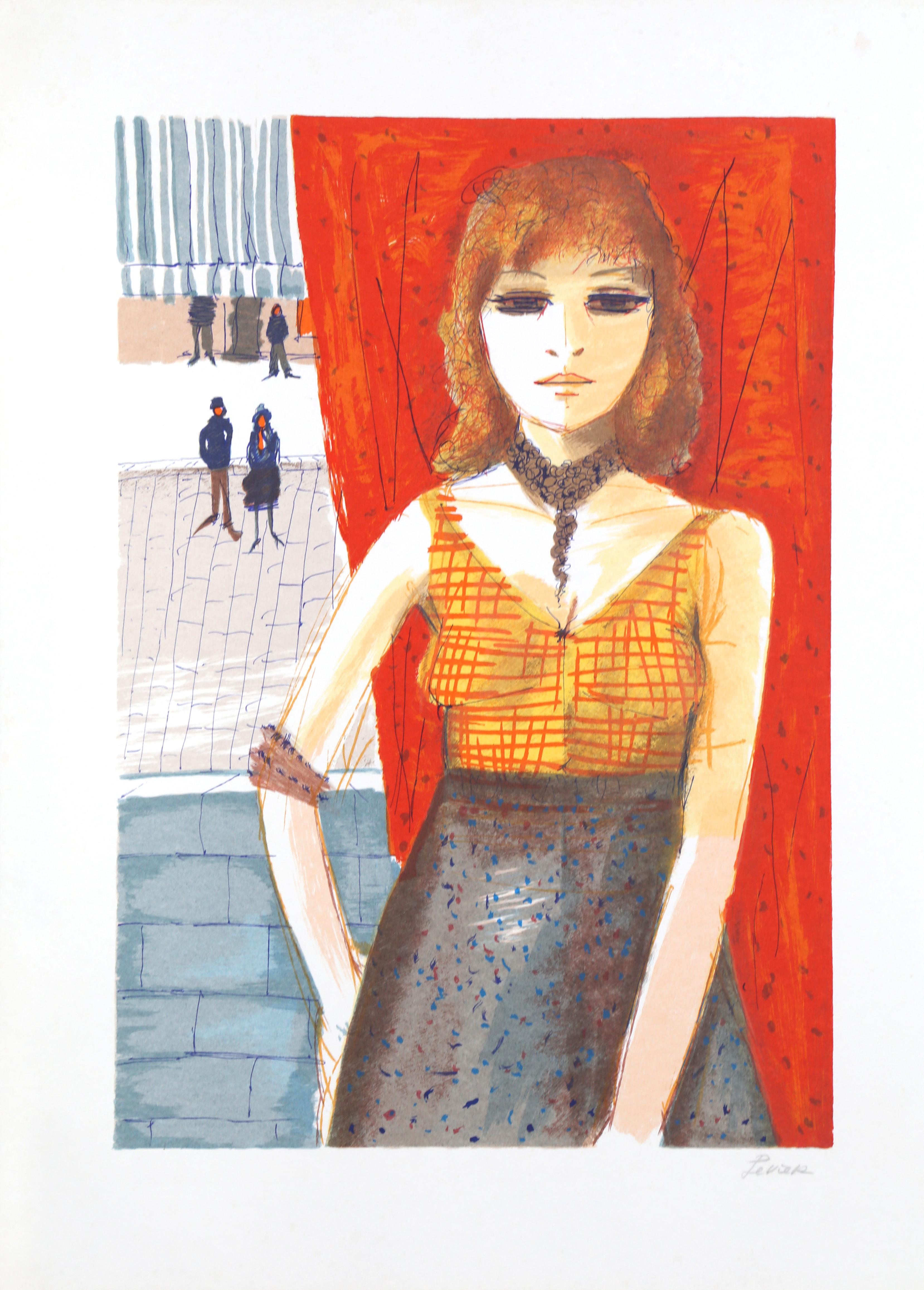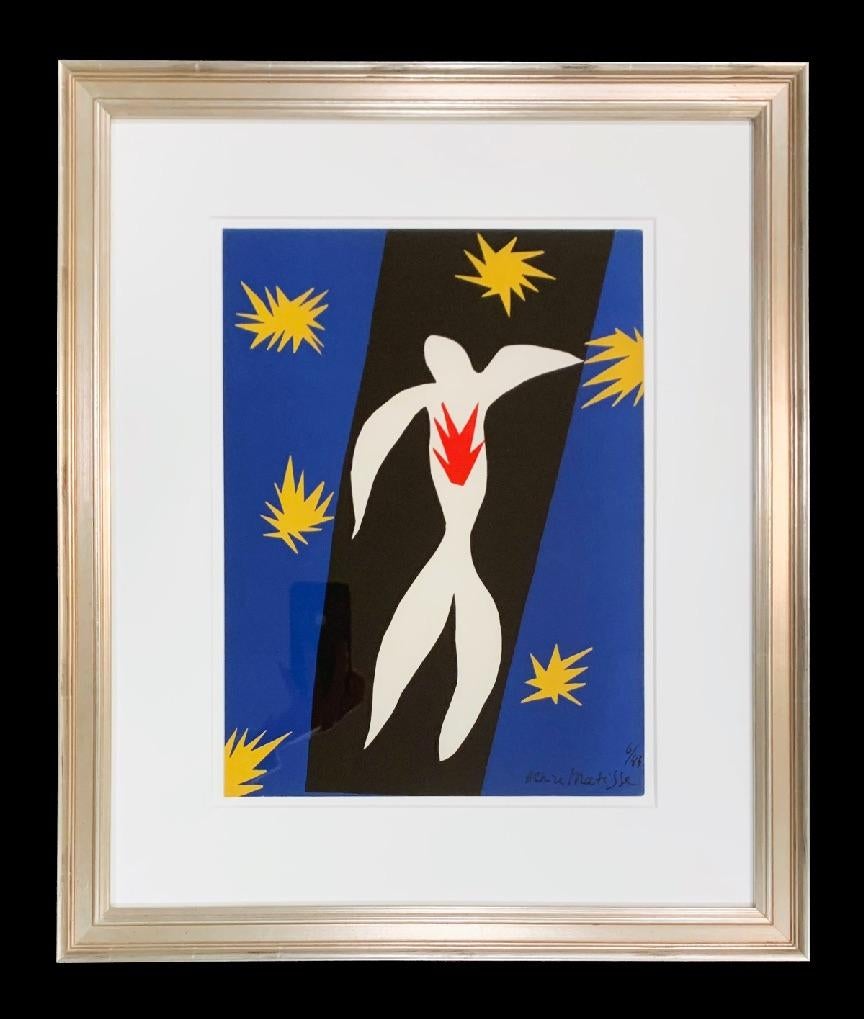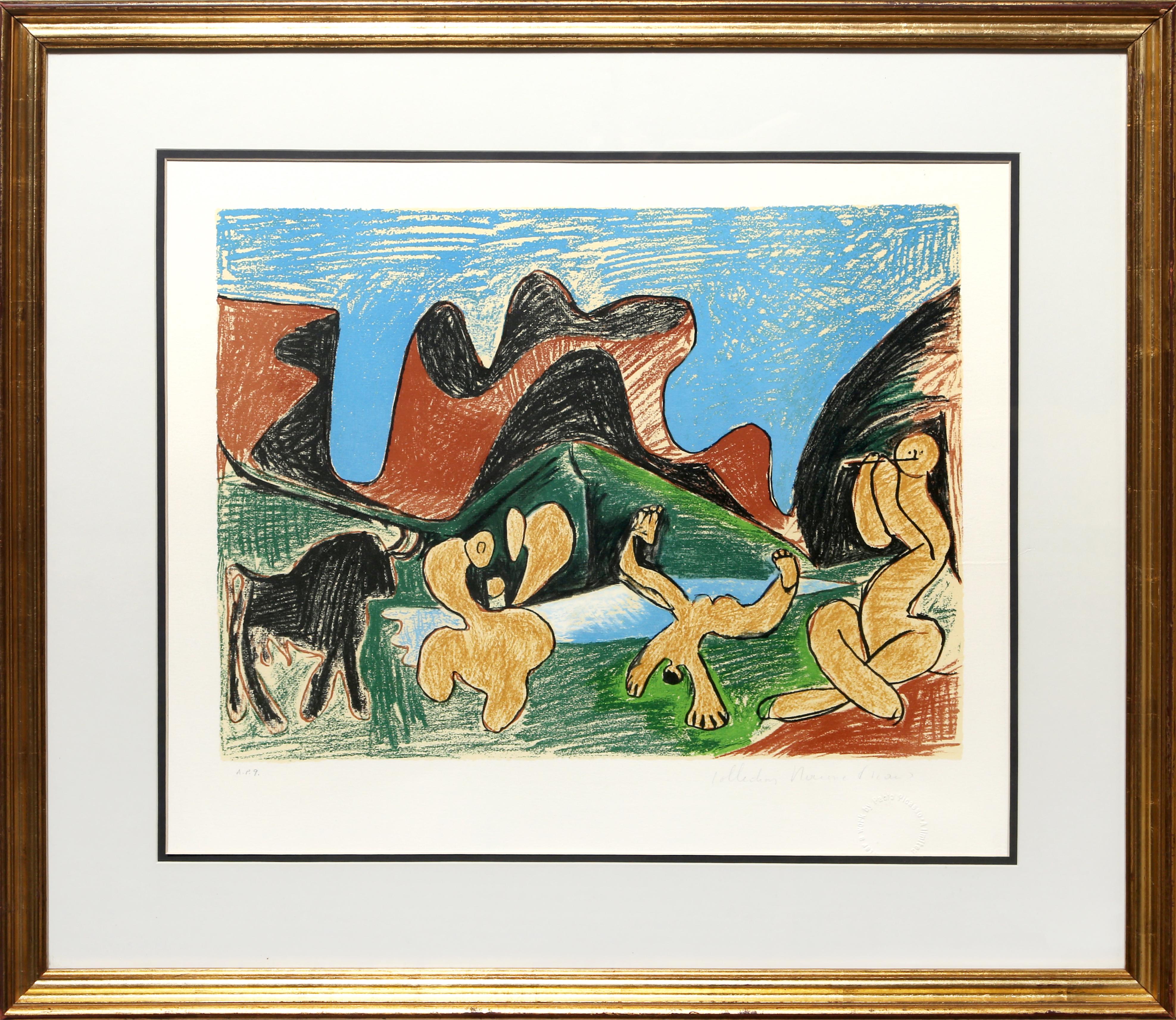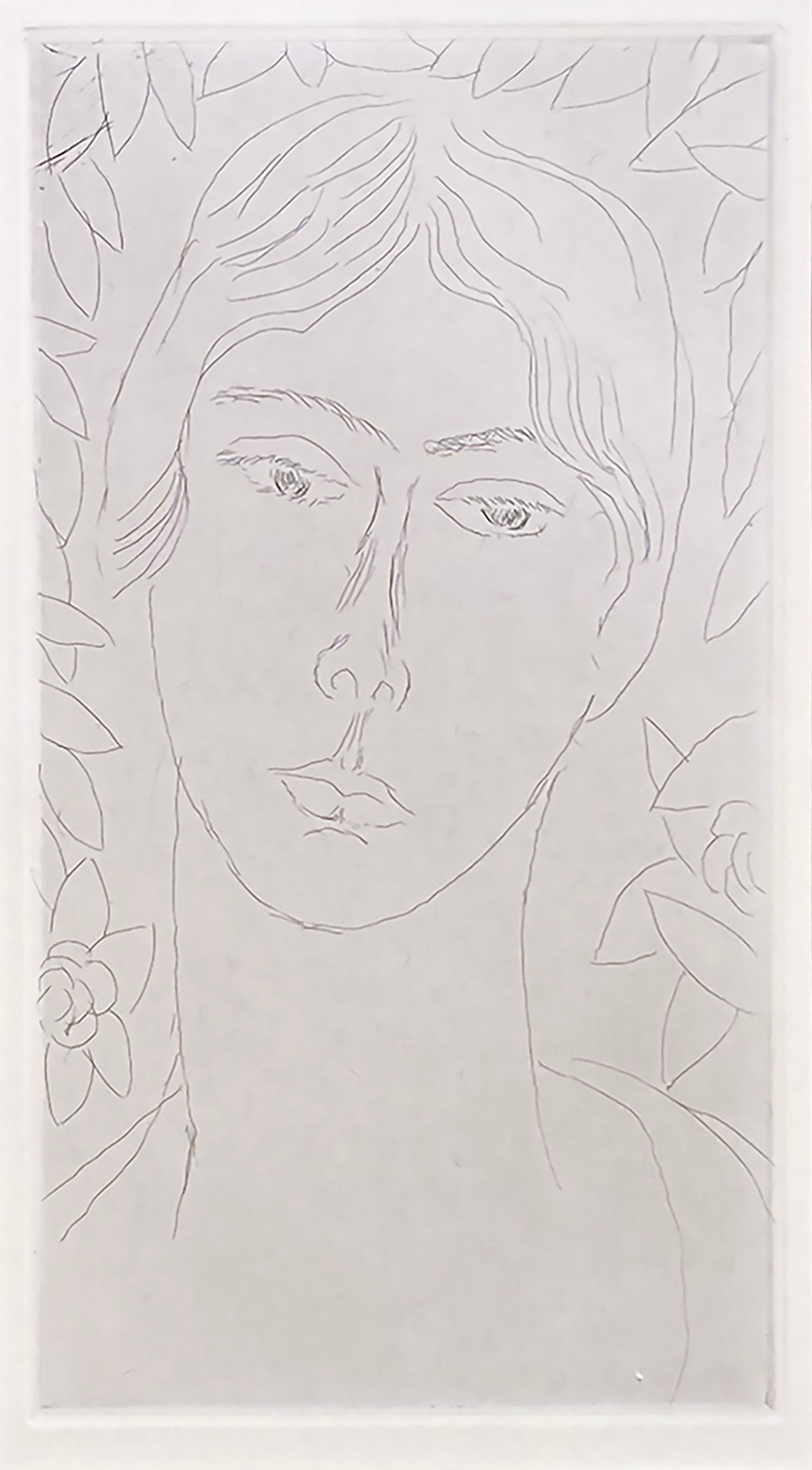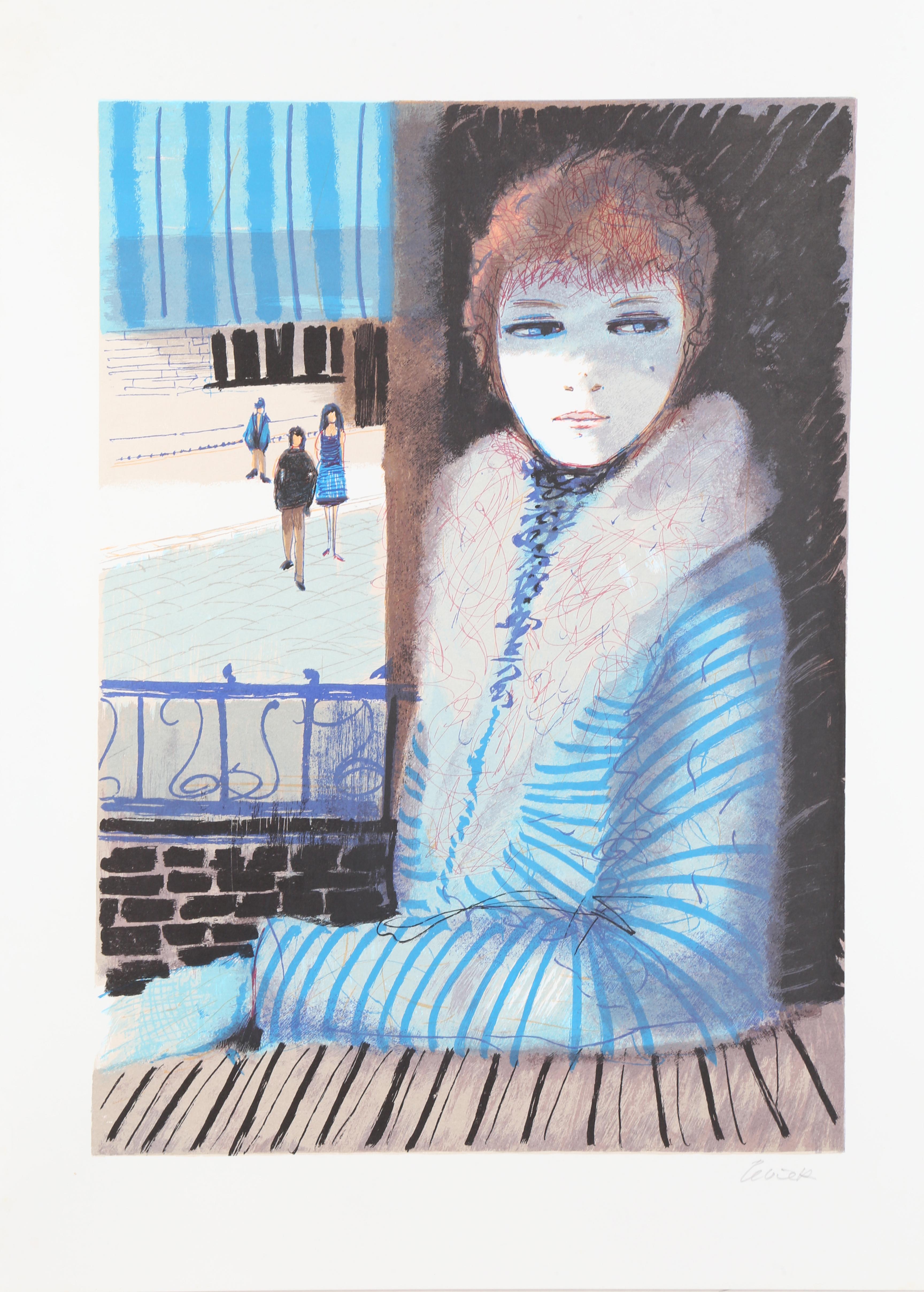Items Similar to Ll'Enfant
Want more images or videos?
Request additional images or videos from the seller
1 of 8
(after) André DerainLl'Enfant1968
1968
About the Item
Linocut, stamp signed circa 1968.
- Creator:(after) André Derain (1880 - 1954, French)
- Creation Year:1968
- Dimensions:Height: 27.9 in (70.87 cm)Width: 22.9 in (58.17 cm)
- Medium:
- Movement & Style:
- Period:1660-1669
- Condition:
- Gallery Location:Mount Vernon, NY
- Reference Number:1stDibs: LU134826087782
About the Seller
4.1
Vetted Seller
These experienced sellers undergo a comprehensive evaluation by our team of in-house experts.
Established in 2020
1stDibs seller since 2020
161 sales on 1stDibs
Typical response time: 1 hour
- ShippingRetrieving quote...Ships From: Mount Vernon, NY
- Return PolicyA return for this item may be initiated within 14 days of delivery.
More From This SellerView All
- The PrisonerBy (after) André DerainLocated in Mount Vernon, NYEtching, signed in the plate.Category
1660s Fauvist Figurative Prints
MaterialsEtching
- Salon des Cent: Exposition Internationale d'affichesBy Henri de Toulouse-LautrecLocated in Mount Vernon, NYInscriptions: Full printed poster text: Salon des Cent: 31 rue Bonaparte, Exposition Internationale d'acciches / Imp. Bourgerie & Cie. Paris Summary/De...Category
Late 20th Century Post-Impressionist Figurative Prints
MaterialsLithograph
- Salon des Cent: Exposition Internationale d'affichesBy (After) Henri Toulouse LautrecLocated in Mount Vernon, NYInscriptions: Full printed poster text: Salon des Cent: 31 rue Bonaparte, Exposition Internationale d'acciches / Imp. Bourgerie & Cie. Paris Summary/De...Category
Late 20th Century Post-Impressionist Figurative Prints
MaterialsLithograph
- HyglaLocated in Mount Vernon, NYInscriptions: Bottom, plate: Io. Dom. Campiglia del. / Cosmus Mogalli Sculp. Top right, plate: XXIV Summary/Description: Engraving by Cosmus Mogalli after drawing by Giovanni Domenic...Category
Late 18th Century Animal Prints
MaterialsEngraving
- AjaxBy Georges BraqueLocated in Mount Vernon, NYOriginal etching depicting "Ajax", a mythical Greek hero of the Trojan War. Plate drawn by noted French artist Georges Braque, a major 20th century figure i...Category
20th Century Figurative Prints
MaterialsEtching
- The Sunday World; Sept. 29Located in Mount Vernon, NYColor letterpress poster advertising the Sunday World, the Sunday publication of the New York World, published by Joseph Pulitzer. The series of colorful posters...Category
Early 20th Century More Prints
MaterialsColor
You May Also Like
- Red Head, Lithograph by Charles LevierBy Charles LevierLocated in Long Island City, NYRed Head Charles Levier, French (1920–2003) Date: circa 1970 Lithograph, signed and numbered in pencil Edition of 250 Image Size: 24 x 16 inches Size: 30 x 22 in. (76.2 x 55.88 cm)Category
1970s Fauvist Figurative Prints
MaterialsLithograph
- La Chute d'Icare (The Fall of Icarus)By Henri MatisseLocated in Washington, DC“After Matisse” La Chute d’Icare, pochoir, from Verve, Vol. IV, No. 13, “De la couleur” Éditions de la Revue Verve, Paris 1945. An unsigned and unnumber...Category
1940s Fauvist Figurative Prints
MaterialsLithograph
- Bacchanale, Cubist Lithograph by Pablo PicassoBy Pablo PicassoLocated in Long Island City, NYA lithograph from the Marina Picasso Estate Collection after the Pablo Picasso painting "Bacchanale". The original painting was completed circa 1922. In the 1970's after Picasso's d...Category
1980s Fauvist Figurative Prints
MaterialsLithograph
- "Mlle Landsberg" (grade planche, pl. 16)By Henri MatisseLocated in Missouri, MO"Mlle Landsberg" (grade planche, pl. 16), 1914 Henri Matisse (French, 1869-1954) Signed and Numbered Lower Right Edition 12/15 Image size: 7 7/8 x 4 5/16 inches Sheet size: 17 11/16 x 12 1/2 inches With frame: 19 1/2 x 14 1/2 inches Henri Matisse came from a family who were of Flemish origin and lived near the Belgian border. At eight o'clock on the evening of December 31, 1869, he was born in his grandparents' home in the town of Le Cateau in the cheerless far north of France. His father was a self-made seed merchant who was a mixture of determination and tightly coiled tension. Henri had no clear idea of what he wanted to do with his life. He was a twenty-year-old law clerk convalescing from appendicitis when he first began to paint, using a box of colors given to him by his mother. Little more than a year later, in 1890, he had abandoned law and was studying art in Paris. The classes consisted of drawing from plaster casts and nude models and of copying paintings in the Louvre. He soon rebelled against the school's conservative atmosphere; he replaced the dark tones of his earliest works with brighter colors that reflected his awareness of Impressionism. Matisse was also a violinist; he took an odd pride in the notion that if his painting eye failed, he could support his family by fiddling on the streets of Paris. Henri found a girlfriend while studying art, and he fathered a daughter, Marguerite, by her in 1894. In 1898 he married another woman, Amelie Parayre. She adopted the beloved Marguerite; they eventually had two sons, Jean, a sculptor and Pierre who became an eminent art dealer. Relations between Matisse and his wife were often strained. He often dallied with other women, and they finally separated in 1939 over a model who had been hired as a companion for Mme. Matisse. She was Madame Lydia, and after Mme. Matisse left, she remained with Matisse until he died. Matisse spent the summer of 1905 working with Andre Derain in the small Mediterranean seaport of Collioure. They began using bright and dissonant colors. When they and their colleagues exhibited together, they caused a sensation. The critics and the public considered their paintings to be so crude and so roughly crafted that the group became known as Les Fauves (the wild beasts). By 1907, Matisse moved on from the concerns of Fauvism and turned his attention to studies of the human figure. He had begun to sculpt a few years earlier. In 1910, when he saw an exhibition of Islamic art, he was fascinated with the multiple patterned areas and adapted the decorative universe of the miniatures to his interiors. As a continuation of his interest in the "exotic", Matisse made extended trips to Morocco in 1912 and 1913. At the end of 1917, Matisse moved to Nice; he would spend part of each year there for the remainder of his life. A meticulous dandy, he wore a light tweed jacket amd a tie when he painted. He never used a palette, but instead squeezed his colors on to plain white kitchen dishes...Category
1910s Fauvist Figurative Prints
MaterialsEtching, Drypoint
- Girl in Blue, Lithograph by Charles LevierBy Charles LevierLocated in Long Island City, NYGirl in Blue Charles Levier, French (1920–2003) Date: circa 1970 Lithograph, signed in pencil l.r. Edition of 250 Image Size: 24 x 17 inches Size: 30 x 22 in. (76.2 x 55.88 cm)Category
1970s Fauvist Figurative Prints
MaterialsLithograph
- Joies de BretagneBy (after) Paul GauguinLocated in Missouri, MOPaul Gauguin (1848-1903) Joies de Bretagne (Kornfeld 7 B) zincograph, 1889, on simili Japon paper, from the second edition of circa 50 impressions, published by Ambroise Vollard afte...Category
Early 1900s Fauvist Figurative Prints
MaterialsLithograph
Recently Viewed
View AllMore Ways To Browse
Andre Derain Signed
Vintage Dress Sketches
1972 Olympics
Matisse Dancer
Early 20 Century Spanish Paintings
Matisse Dance
Vintage Church Stained Glass
19th Century Lithography
Les Hommes
Jewish Plates
New Orleans Lithograph
Spokes 3
St Michael Sculpture
World War 1 Posters
World War 1 Poster
Zodiac Prints
Alice And Wonderland
Andy Warhol Advertising
